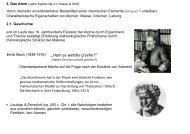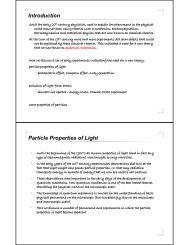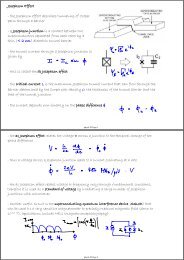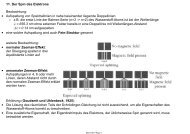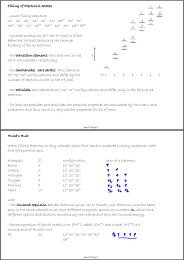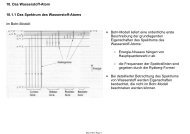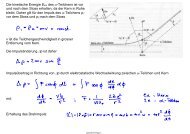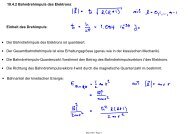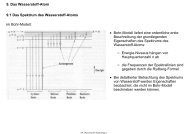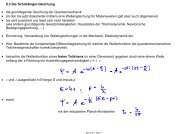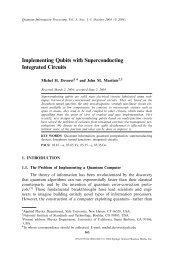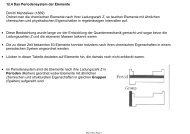Tunnel Diode - Quantum Device Lab
Tunnel Diode - Quantum Device Lab
Tunnel Diode - Quantum Device Lab
You also want an ePaper? Increase the reach of your titles
YUMPU automatically turns print PDFs into web optimized ePapers that Google loves.
Meissner Effect<br />
- superconductors are perfectly diamagnetic<br />
- in a type I superconductor field below the<br />
critical field is expelled completely from the<br />
material when cooled through T c , see figure<br />
- in this Meissner effect screening currents<br />
are induced in the superconductor to cancel the<br />
externally applied field<br />
- this effect distinguishes a superconductor from an ideal conductor<br />
- type II superconductors below a first critical field Bc1 behave like type I superconductors,<br />
above B c1 and below a second critical field B c2 magnetic flux can penetrate into the material<br />
bringing it to a mixed superconducting/normal state<br />
- B c2 critical fields can be high so that these<br />
materials are interesting for generating<br />
magnetic fields<br />
material T c [K] B c2 [T]<br />
Nb 3 Sn 18.0 24.5<br />
phys4.19 Page 9<br />
Cooper Pairs and Bardeen-Cooper-Schrieffer (BCS) theory<br />
- in conventional superconductors electrons attract each other through deformations induced<br />
in the crystal lattice<br />
- materials with strong lattice vibrations are usually poor conductors at room temperature but<br />
maybe superconductors at low temperatures<br />
- a hint of this fact was first found when it was noted that the T c of different superconductors<br />
depends on the isotope used, e.g. T c ( 199 Hg) = 4.161 and T c ( 204 Hg) = 4.126<br />
- two electrons (Fermions) form a single Cooper pair (Boson) with the electrons being in a<br />
singlet state with zero angular momentum<br />
- the binding energy E g , also called the gap energy, is<br />
typically on the order of 1 meV and can be measured using<br />
microwave absorption<br />
- at temperatures above 0 K some Cooper pairs are broken up<br />
by thermal fluctuations, the remaining electrons interact<br />
with the Cooper pairs effectively reducing the gap energy<br />
(see figure)<br />
phys4.19 Page 10



